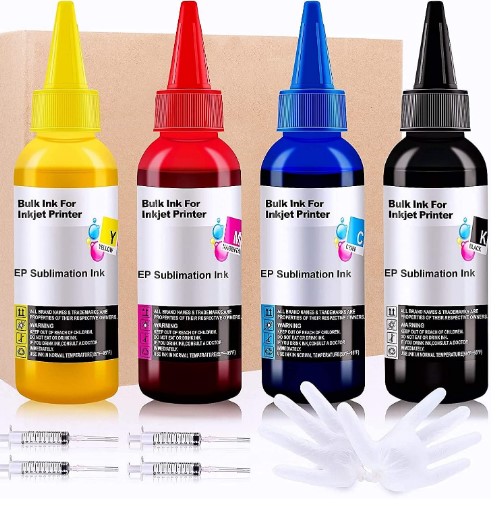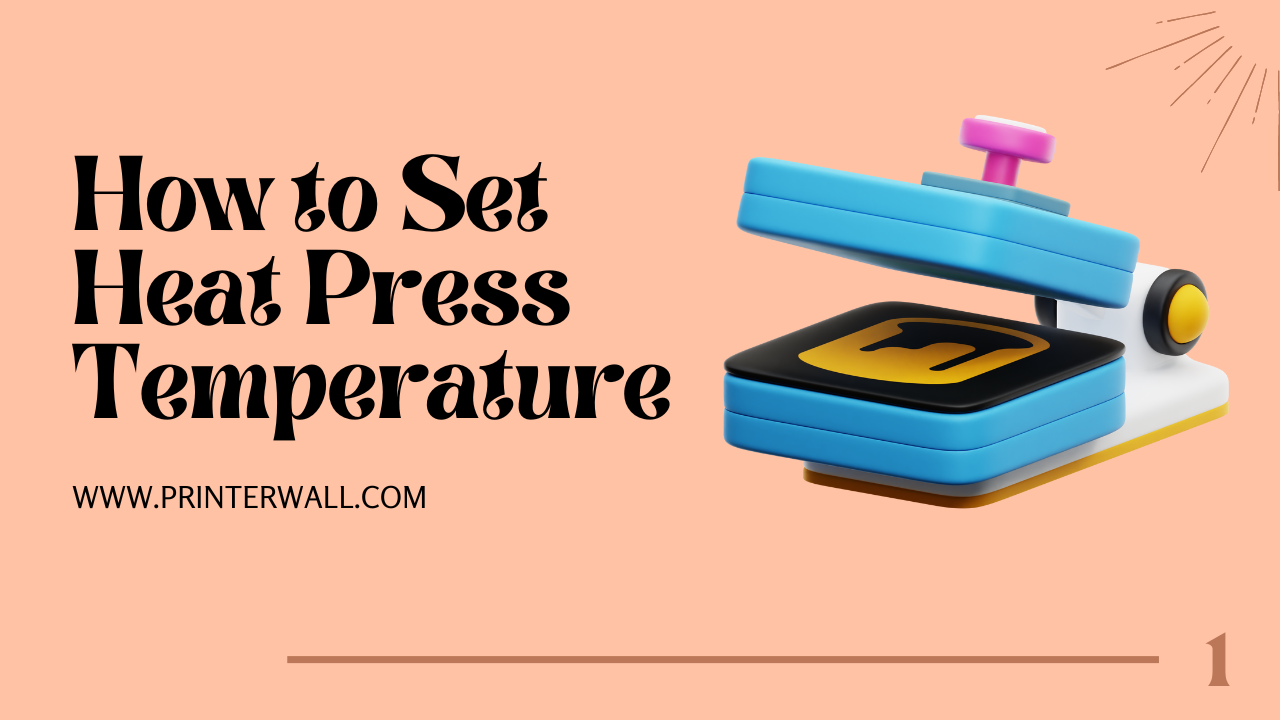If you are looking to create custom apparel or other items using a heat press, setting the appropriate temperature is essential. This article will provide step-by-step instructions on how to set the heat press temperature correctly to achieve the best results. It will cover how to select the right temperature for the material being pressed, as well as how to properly adjust the heat press to reach that temperature. Follow these steps to ensure that your heat press is set correctly and your projects turn out perfectly!
How to Determine Heat Press Temperature
The heat press temperature is a very important factor when it comes to heat transfer printing. The right temperature and time settings ensure that the decoration adheres properly and lasts for a long time. In order to determine the correct heat press temperature, it is important to consider the types of fabric and decorations that you are working with.
Consider Fabric and Decorations
When it comes to types of fabric, there are a few key factors to consider. Natural fabrics such as cotton, linen, and hemp require a lower temperature setting than man-made fabrics such as polyester and nylon. The thickness of the fabric also plays a role in determining the temperature setting; thicker fabrics require a higher temperature setting than lighter fabrics.
Types of Fabric
In terms of types of decorations, the type of material that the decoration is made of should be taken into account. For example, if you are transferring a design made of vinyl, you will need a higher temperature setting than if you were transferring a design made of sublimation paper. It is also important to consider the size of the decoration; larger decorations require more heat than smaller decorations.
Types of Decorations
By taking into account the types of fabric and decorations that you are working with, you can determine the correct heat press temperature for your project. This will ensure that the decoration adheres properly and lasts for a long time.
Consider Substrate and Ink

Types of Substrate
Substrate refers to the material onto which ink is printed. The most common substrate for inkjet printing is paper, but other substrates such as vinyl, canvas, fabric, wood, and metal can be used. Each substrate has its own characteristics, and the type of substrate used will affect the way the ink adheres and the final outcome of the print.
Types of Ink
Inkjet printing uses ink cartridges of various colors. The most common colors are cyan, magenta, yellow, and black (CMYK). There are also specialty inks, such as metallic and fluorescent inks, and archival inks that are designed to last longer than other inks. Depending on the substrate and the desired result, the type of ink used will vary.
Check Manufacturer’s Suggested Temperature
Manufacturer’s Instructions
Before adjusting or setting the temperature on an air conditioning or heating unit, it is important to consult the manufacturer’s instructions. The manufacturer will provide specific information on how to adjust the temperature, as well as what the recommended temperature settings are.
Recommended Temperature
The manufacturer’s recommended temperature settings are based on the type of device, the size of the room, and the climate in the area. Generally, it is recommended to set the temperature to around 18-22 degrees Celsius for air conditioning and 20-25 degrees Celsius for heating. It is important to note that these temperatures can vary depending on the manufacturer’s instructions.
Tips for Setting Heat Press Temperature
Using a heat press is a great way to embellish fabric with custom designs, logos, and artwork. However, setting the right temperature for your particular heat press is crucial to achieving the desired results. Here are some tips to help you get the most out of your heat press.
Use a Heat Press Pad
A heat press pad can help to ensure even heat distribution, which is key to achieving consistent results. It also helps to protect the surface of the press from any accidental damage. Additionally, a heat press pad can help to reduce the amount of time needed to heat up the press, as it can absorb and retain heat better than the press alone.
Test Temperature on a Swatch
Before applying your design to the fabric, it is important to test the temperature of the press on a scrap piece of fabric. This will help to ensure that the temperature is set correctly and that there will not be any surprises when applying the design.
Monitor Temperature
It is important to keep an eye on the temperature of the press, as it may need to be adjusted from time to time. This is especially true when using thicker fabrics, as the temperature may need to be increased to ensure the design is applied correctly. Additionally, monitoring the temperature can help to prevent any accidental damage to the fabric.
Benefits of Using Heat Press
Heat presses are an essential tool for many businesses in the apparel and textile printing industry. They provide a range of benefits, from faster printing times to improved print quality.
Speed
Heat presses are designed to produce prints faster than traditional printing methods. This is because the heat press is able to apply pressure and heat at the same time, resulting in a quicker and more consistent printing process. This means that businesses can produce more prints in less time, leading to improved productivity and profits.
Quality
Heat presses provide a more even, consistent quality of prints than other printing methods. The heat and pressure applied to the fabric ensure that the image is transferred properly and with a high level of detail. This can be especially beneficial when printing complex designs with fine details.
Versatility
Heat presses are capable of printing on a wide range of materials, from t-shirts and hoodies to bags and hats. This makes them a great choice for businesses that need to print on a variety of different materials.
Durability
Heat presses produce prints that are highly durable. The prints are resistant to fading, cracking, and peeling, meaning that they can last for much longer than prints produced using other methods.
Also Read: How to Remove Sublimation ink
Conclusion
In conclusion, setting the temperature on a heat press can be a tricky process. However, with the right tools and knowledge, the temperature can be set with ease and accuracy. Knowing the right temperature for the material being used is essential when it comes to heat pressing. It is always a good idea to use a thermometer to ensure accuracy. With the right temperature, a quality heat press job is easy to achieve.
Frequently Asked Questions
What is the ideal temperature to set a heat press?
The ideal temperature to set a heat press depends on the type of material being used. Generally, heat press temperature should be set between 325-400°F.
Should I adjust the heat press temperature for different types of materials?
Yes. The heat press temperature should be adjusted according to the type of material being used. For example, fabrics such as 100% cotton and polyester require a lower temperature setting of around 325°F, while nylon and other performance fabrics require a higher temperature of 400°F.
What should I do if the temperature is too low or high?
If the temperature is too low, the transfer may not stick properly. In this case, increase the temperature slightly and test the heat press again. If the temperature is too high, the material may scorch or burn, so reduce the temperature and test the heat press again.
What other factors should I consider when setting the heat press temperature?
You should also consider the thickness and type of transfer paper being used, as well as the amount of pressure being applied.
